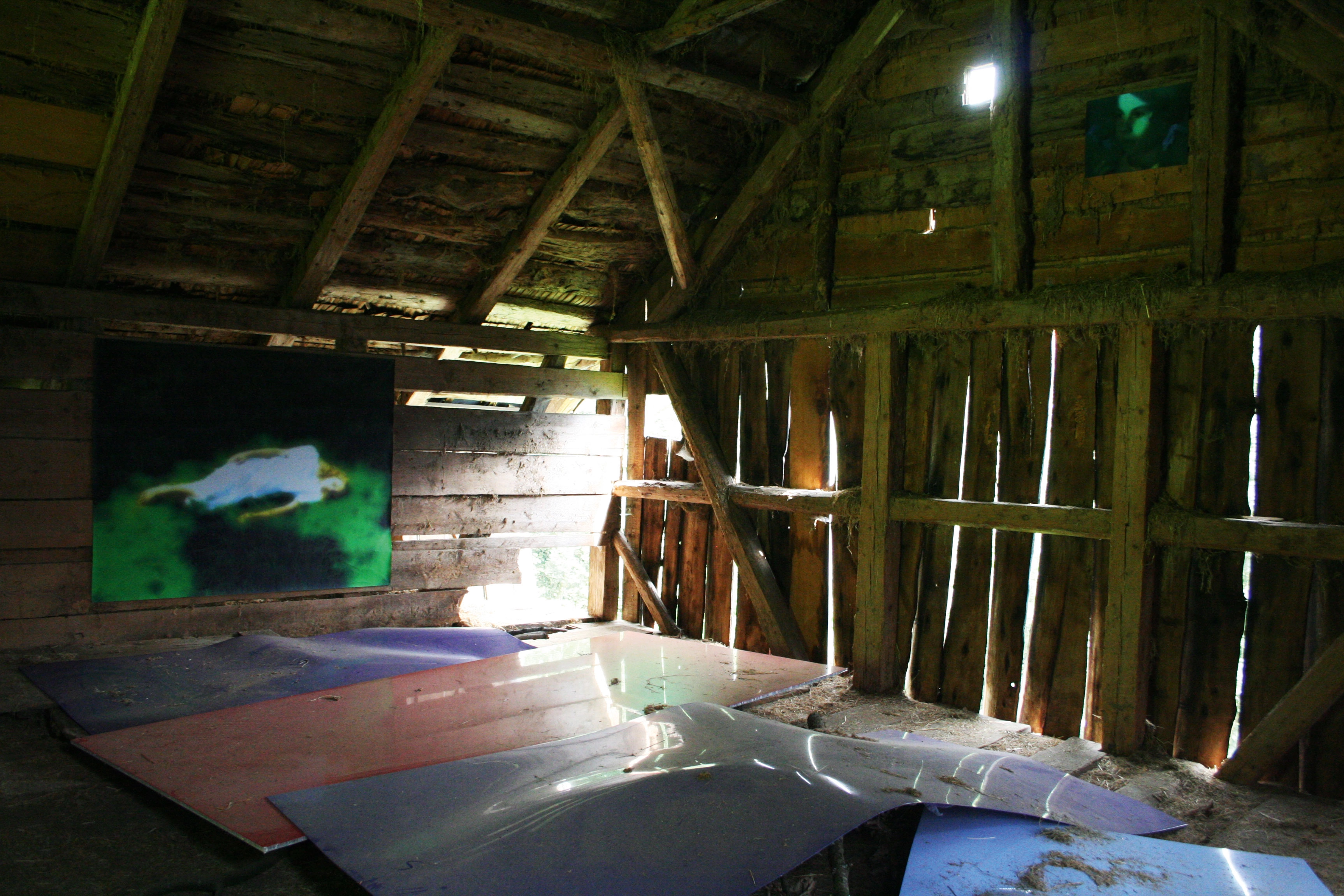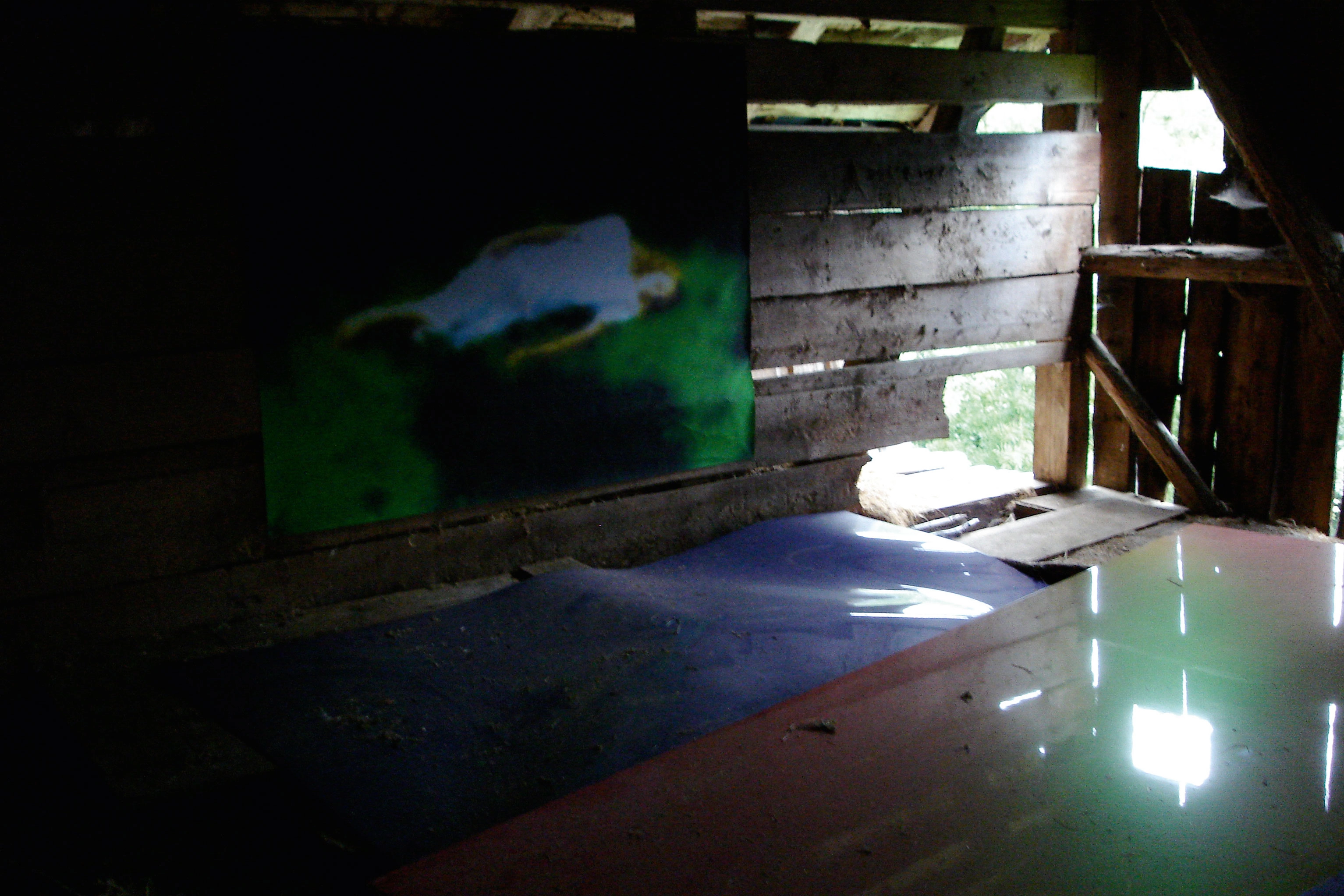Two photographs by Annelies Štrba were also on view in Adrian Schiess’s exhibition that opened on 21 May 2005. The two artists, friends since 1982, collaborated conceptually on planning the exhibition, although they did not create any works together. The exhibition was on show in this form until late autumn. At the same time, the local museum in Amden screened Štrba’s video Frances and the Elves, and at Café Post, a popular meeting place nearby, there was an exhibition of her portraits of farmers. By spreading her project over three locations, the artist was able to link up not only different modes of exhibiting and types of work but also people with an entirely different approach to art.
Štrba began taking pictures when she was fifteen and for many years did so with no artistic intent. At first, she mostly photographed children; her main focus later on, except for places of personal importance, was her own family, especially her own children Sonja, Samuel, and Linda. She made her first public appearance in 1990 with a solo show at Kunsthalle Zürich for which she copied her photographs onto canvas. Her early pictures record her life as the mother of three small children. These works are a mirror of mutual dependence, and being very personal, they are Štrba’s most popular group of works. They speak to us because they tell us about shared memories of time. They are recollections of childhood that reveal a sense of security, the safety of home, as well as dependence and isolation.
While travelling over the years, Štrba has expanded her repertoire, taking pictures of landscapes, gardens and parks as well as a series of unique urban videos. But until just a few years ago, her most important theme was still her children, especially her two daughters, who now have children of their own. Štrba’s work is the product of her artistic transformation of the realities of daily life. She gives what she sees, encounters, and experiences a different tonality. She explores emotions; she shows the poetic dimension of reality; and she also peers into the abyss. Her pictures liberate everyday life from the vice-like hold of utility.
After putting aside the camera for a few years and using video footage as a point of departure for her paintings, Annelies Štrba took up photography again in Amden with a series of portraits of local farmers. The two stills from the video Frances and the Elves for which the artist worked together with the daughters of farming families of her acquaintance in Amden, went on show in Adrian Schiess’s exhibition. There, instead of acting as a counterpoint to his painting, their heightened juxtaposition of sleeping and seeing had the effect of reinforcing the serene and meditative atmosphere generated by his works.
– Roman Kurzmeyer

 Images
Images
 Info
Info




 Next Exhibition
Next Exhibition